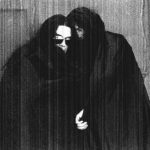Citkārt rāmā Anglikāņu baznīca uzplaiksnīs neordināru skaņu, ainu un gaismu izvirdumā, kad tajā iedārdēsies okeānu dzīles, metāla mūzika un perkusijas, iedziedāsies ērģeļu stabules kopā ar mūsdienu elektronisko mūziku starptautiskajā mūzikas festivālā Skaņu mežs 22. un 23.maijā, attiecīgi 21:30 un 18:00.
2009.gada Skaņu meža pamanāmākais notikums – grupas Sunn O))) koncerts 22.maijā, skaņas ziņā būs arī varenākais. Sunn O))), kas ar Rīgas koncertu aizsāks Eiropas koncerttūri, ir amerikāņu kulta grupa, kas ar savu mistisko, minimālistisko un unikālo metāla mūzikas interpretāciju ir šajā žanrā īstenojusi (burtiski) lēnu revolūciju. Iespējams pilnīgi pamatoti saka, ka Sunn O))) piederot lēnākā un zemākā un skaņa pasaulē. Q Magazine ir nosaukusi viņu albumu White1 kā visu laiku astoņpadsmito smagāko albumu, apspējot AC/DC albumu Back in Black un ierindojoties tieši zem Aphex Twin albuma …I Care Because You Do. Jābilst, Sunn O))) koncerts, ar ko viņi atzīmē savai desmitajai jubilejai veltītā albuma Monoliths & Dimensions iznākšanu, ir Ziemeļeiropā vienīgais.
Sestdienā, 23.maijā, Anglikāņu baznīcas koncerti turpināsies ar smalkāku un daudzveidīgāku skanējumu. Tajā Rīgas ērģeļmūzikas tradīcijas tiks sasaistīta ar atmosfērisku eksperimentālo mūziku. Vakara ievadā spēlēs Filips Džeks, augsti vērtētais angļu multimediju komponists, viens no tā dēvētā turntablism (skaņu plašu manipulācijas mākslas) pionieriem. Mākslinieks vecus ierakstus un atskaņotājus spēlē kā mūzikas instrumentus, radot ļoti personisku muzikālu valodu.
Matērijas un mūzikas attiecības savā mūzikā risina godalgotā komponiste Santa Ratniece, kas Skaņu mežam ir sagatavojusi darbu Chants des Dunes. To izpildīs atzītais angļu ērģelnieks Čārlzs Metjūzs un perkusionistes Elīna Endzele un Virdžīnija Mutlū. Norvēģiete Jana Vinderena, kas spēlēs pirms Ratnieces, ar jaunākajām tehnoloģijām pēta jūras apslēptās dzīles. Viņas darbi atklāj neredzamās pasaules sarežģītību un savādo raksturu, līdz klausītājam poētiskā interpretācijā atvedot skaņas no okeāna dzīlēm un dziļākajām ledāju plaisām.
Iestājoties tumsai, skanēs komponistes Hilduras Gudnadotiras darbs Nacre, ko ilustrēs Elinas Hansdotiras gaismas instalācija. Gudnadotiras „pastāvīgā darbavieta” ir islandiešu grupa Múm. Viņas solodarbību raksturo ziemeļnieciska melanholija un spēcīgi, zemi, minimāli toņi, kā strādājot ar čellu, tā arī viņas jaunatklātajā interesē par ērģelēm. Savukārt Elinas Hansdotiras interaktīvie darbi rosina skatītāju pārvērtēt savas attiecības ar telpu.
Biļetes Biļešu tirdzniecības vietās un pie ieejas. Sunn O))) koncerts – Ls 9.99, ērģeļmūzikas un elektronikas koncerts – Ls 3.99 un 4.99.
22.maijs, Anglikāņu baznīca, Anglikāņu iela 2A:
21:30 – Sunn O)))
23.maijs, Anglikāņu baznīca, Anglikāņu iela 2A:
18:00 Jana Winderen
19:00 Santa Ratniece (ērģeļmūziku izpilda Charles Matthews, perkusijas – Elīna Endzele, Virdžīnija Mutlū)
19:45 Philip Jeck
20:45 Charles Matthews & Mike Harding
21:15 Charles Matthews izpilda dažādas ērģeļu kompozīcijas (pilnu programmu un aprakstus skatīt zem attēliem)*
21:35 Hildur Guðnadóttir (ērģeļmūziku izpilda Charles Matthews, gaismas instalācija – Elin Hansdottir)

Santa Ratniece

Sunn O)))

Hildur Gundadottir

Jana Winderen
* Ērģeļmūzika Čārlza Metjūza izpildījumā:
Charles Tournemire Prelude for the Introit
on Ascension Day (c. 1928)
Tournemire’s monumental cycle “The Mystical Organ” consists of five
pieces for each week of the Church’s year, incorporating the plainsong
melodies appropriate for each Sunday or feast-day. This little introit
sets the chant “Viri Galilei”.
Liana Alexandra Allegro veloce e
caratteristico in honorem J.S. Bach (1985)
Romanian composer Liana Alexandra wrote her Allegro veloce e
caratteristico in 1985, in honour of the 300th anniversary of the birth
of J.S. Bach. It blends the languages of the early 18th and late 20th
centuries.
From tablature of Adam Ileborgh Frowe al myn hoffen an
dyr lyed (c.1448)
The tablature of Adam Ileborgh, of German provenance, includes three
settings of this song, which appears in slow notes at the bottom of the
musical texture, whilst the right hand plays a faster, improvisatory
line above it. The distinguishing feature of the setting played today
is that the right hand generally plays six beats for each note of the
song-melody.
J.S. Bach Partita on ‘Ach, was
soll ich Su”nder machen'(c.1710)
This is a set of variations on a German hymn-tune. The last two
variations are somewhat extended: these are nos. 9 and 10, if you count
the opening presentation of the theme as no. 1. Surviving manuscripts
contain instructions implying the use of the organ, although the music
itself at times suggets the more intricate characteristics of some
harpsichord music.
From a manuscript from Groningen University Empris domoyrs (c.1400)
A 15th century printed book from Groningen, the Netherlands, was found
to contain within its binding fragments of a 14th century musical
treatise, together with a musical manuscript that includes this little
piece. Like the Adam Ileborgh extract heard earlier, a decorative upper
line is added to a pre-existing melody played in slow notes by the left
hand.
Stephen Montague Behold a pale horse
(1990/1)
Stephen Montague is an American composer and performer based in
London, U.K. Beyond a Pale Horse was written in 1990, revised in 1991,
and a further version for organ and brass was made in 1994. The work
describes the following extract from the Book of Revelation:
“And when he had opened the fourth seal, I heard the voice of the
fourth beast say, Come and see.
And I looked, and behold a pale horse: and his name that sat on him
was Death, and Hellfire followed with him. And Power was given unto
them over the fourth part of the earth, to kill with sword, and with
hunger, and with death, and with all the beasts of the earth.”
From the Robertsbridge Codex Alleluya/ Firmissime/
Benedictus (c.1360)
The Robertsbridge Codex is the oldest known source of keyboard music
in the world. Although it was found in an old register of Robertsbridge
Abbey in Sussex, certain of its characteristics suggest a French
origin; it has been speculated that it may date from the period 1359-
62, when King Jean II of France, a lover of organ music, was imprisoned
in England – though still attended by a substantial retinue of
courtiers, musicians and (other) servants.
Among the contents of the manuscript is this keyboard adaptation of a
motet attributed to Philippe de Vitry; as in many 14th century French
motets, the three voices sang different texts – hence the triple title.
From the Buxheim organ-book Annabasanna (c.1460)
At some point during the 19th century, the manuscript now known as the
Buxheim organ-book was found in the library of the Carthusian Monastery
of Buxheim, South Germany. This manuscript contains over 260 keyboard
pieces, some of which are specifically for organ, and represents the
largest known source of 15th century keyboard music.
In common with many of the pieces, Annabasanna is a setting of a pre-
existing melody, which is presented in the lowest notes of the musical
texture.
Jehan Alain The hanging garden
(1934)
The short-lived Alain was one of the most imaginative figures in the
organ world of Paris in the 1930’s. Of The Hanging Garden he wrote that
it represents “the artistic ideal, fleeting and constantly pursued: an
inaccessible and inviolable refuge.”







